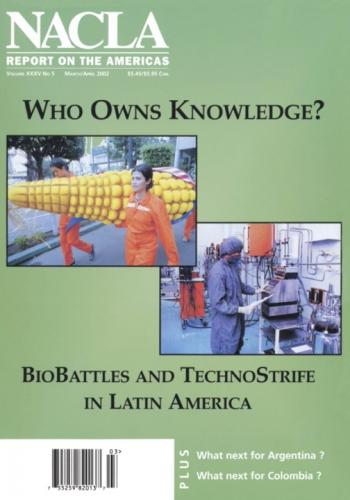Report
The road from the airport at Tuxtla Gutiérrez to San Cristóbal in Chiapas, Mexico wends its way from balmy tropics to cloud covered mountains; a remarkable diversity of topography and climate for a drive of less than two hours. Those extremes of climate and topography make Chiapas rich in plant biodiversity.
Beginning in the early 1960s, biotechnology and medical research became a top priority of the Cuban government, which invested over one billion dollars in biotech research and development (R&D) in the 1990s alone. Cuba’s national Center for Scientific Investigation was founded in 1965, leading the way for the opening of numerous other research facilities.
Carlos Passarelli and Veriano Terto Jr.
Brazil is often singled out as an outstanding example of a developing nation with a successful program to slow the spread of AIDS. At the end of the 1980s, when Ziduvodine (AZT) was the only available treatment for people with AIDS, it was predicted that more than a million Brazilians would be infected with HIV by now, yet the most pessimistic current estimate indicates only slightly more than half that number, some 537,000, are infected, with some 210,000 classified as AIDS cases by the ministry of health.[1]
Jorge Cañizares-Esguerra and Marcos Cueto
Until recently, Latin American science has been dismissed as the underdeveloped and dependent poor cousin of science in the developed world.[1] But Latin American scientists have long made important contributions, and the history of science in Latin America provides a sharp lens for viewing the history of the region’s relations with the rest of world.
The British came to southern Mexico nearly a century ago to build the railroad that slices across Oaxaca’s Tehuantepec Isthmus connecting the Atlantic and Pacific Oceans, which are separated by less than 200 miles at this point.
"A future with traditions," was the slogan the indigenous movement popularized during the 1992 Quincentennial, the 500th anniversary of Europe’s discovery of the Americas.
Charles L. Briggs & Clara Mantini-Briggs
In 1992 and 1993 some five hundred people died in the maze of rivers and thousands of large and small islands that form the delta region of the Orinoco River in eastern Venezuela. The disease that killed so many so quickly was cholera. One of us, Charles, stumbled onto the epidemic in November 1992 during a two-week visit to Tucupita, a city of some 40 thousand inhabitants and the capital of Delta Amacuro state.

